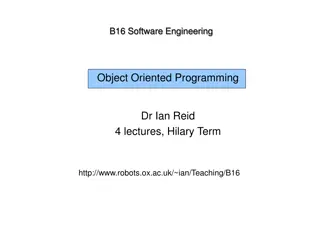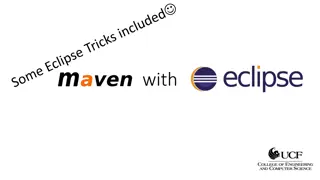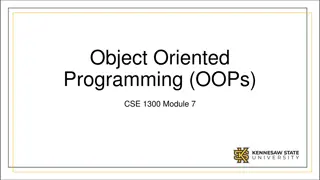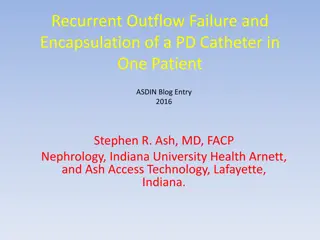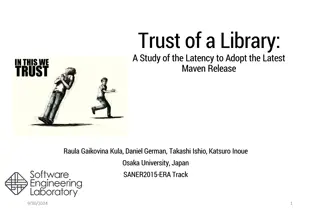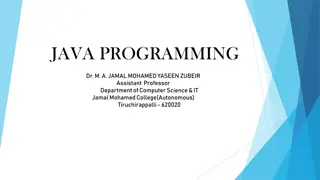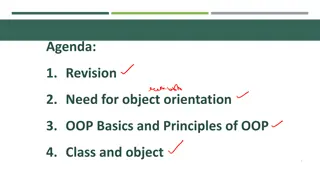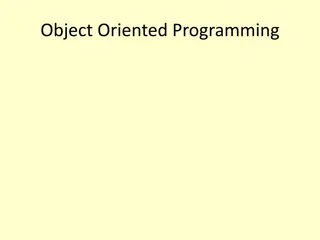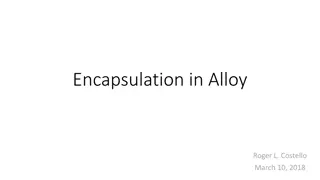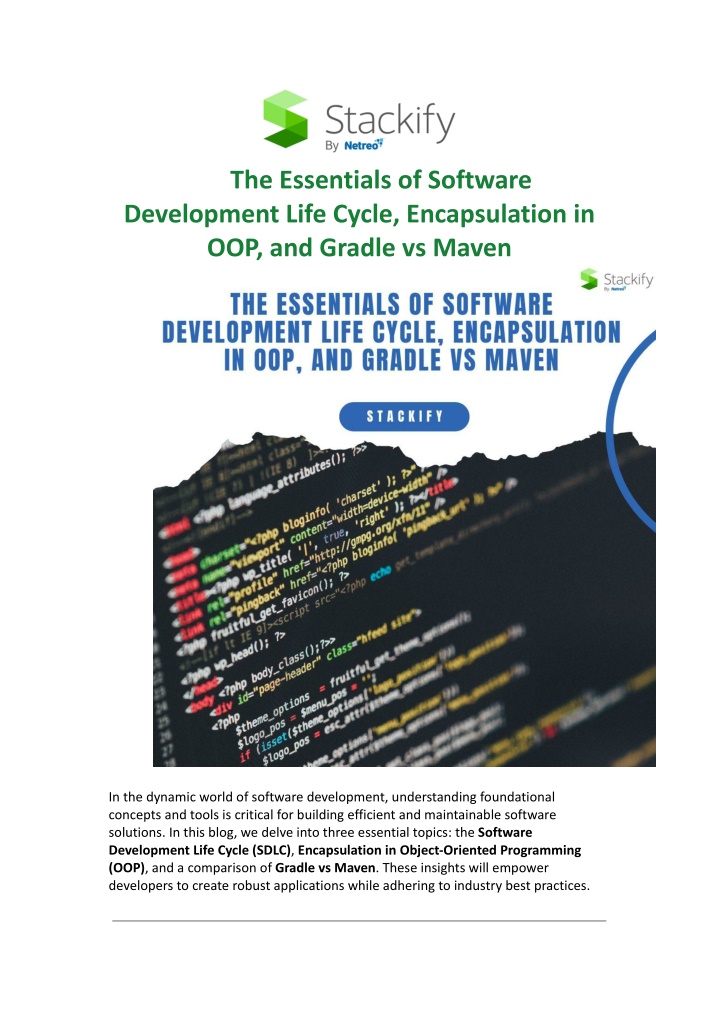
The Essentials of Software Development Life Cycle, Encapsulation in OOP, and Gradle vs Maven.docx
Explore the essentials of SDLC, encapsulation in OOP, and a detailed comparison of Gradle vs Maven to enhance software development efficiency and ensure project success.
Download Presentation

Please find below an Image/Link to download the presentation.
The content on the website is provided AS IS for your information and personal use only. It may not be sold, licensed, or shared on other websites without obtaining consent from the author. If you encounter any issues during the download, it is possible that the publisher has removed the file from their server.
You are allowed to download the files provided on this website for personal or commercial use, subject to the condition that they are used lawfully. All files are the property of their respective owners.
The content on the website is provided AS IS for your information and personal use only. It may not be sold, licensed, or shared on other websites without obtaining consent from the author.
E N D
Presentation Transcript
The Essentials of Software Development Life Cycle, Encapsulation in OOP, and Gradle vs Maven In the dynamic world of software development, understanding foundational concepts and tools is critical for building efficient and maintainable software solutions. In this blog, we delve into three essential topics: the Software Development Life Cycle (SDLC), Encapsulation in Object-Oriented Programming (OOP), and a comparison of Gradle vs Maven. These insights will empower developers to create robust applications while adhering to industry best practices.
What is the Software Development Life Cycle (SDLC)? The Software Development Life Cycle (SDLC) is a structured process that outlines the stages of software development, ensuring systematic and efficient project completion. SDLC serves as a blueprint for developing high-quality software that meets user requirements and is delivered on time. Key Phases of SDLC: 1.Requirement Analysis: Understanding and documenting what the software should do. Engaging stakeholders to gather functional and non-functional requirements. 2.Planning: Creating a roadmap for the project. Allocating resources, estimating costs, and defining timelines. 3.Design: Architecting the software structure, including system design, database schema, and user interface (UI) design. 4.Development: Writing the code using appropriate programming languages and frameworks. Following coding standards and utilizing version control systems. 5.Testing: Conducting various testing methods, such as unit, integration, and user acceptance testing (UAT). Ensuring the software is bug-free and meets quality standards. 6.Deployment: Releasing the software to production environments. Configuring systems for optimal performance and security. 7.Maintenance: Providing updates, fixing bugs, and improving functionality based on user feedback. By adhering to SDLC, teams can mitigate risks, optimize workflows, and ensure project success. Encapsulation in Object-Oriented Programming (OOP) Encapsulation is a fundamental principle of Object-Oriented Programming (OOP) that enhances code modularity and security. It involves bundling data (attributes) and methods (functions) within a single unit, typically a class, and restricting direct access to some of the object s components. Why is Encapsulation Important? 1.Data Protection:
Prevents unauthorized access to sensitive data by using access modifiers like private, protected, and public. 2.Improved Maintainability: Encapsulation hides the internal implementation details, allowing developers to modify the code without affecting external interactions. 3.Enhanced Modularity: Promotes a clear separation of concerns, making the codebase more organized and easier to debug. Example of Encapsulation in OOP (Java): public class Employee { private String name; private int age; // Constructor public Employee(String name, int age) { this.name = name; this.age = age; } // Getter for name public String getName() { return name; } // Setter for name public void setName(String name) { this.name = name; }
// Getter for age public int getAge() { return age; } // Setter for age public void setAge(int age) { if (age > 0) { this.age = age; } } } In this example, the Employee class encapsulates the name and age fields, allowing controlled access through getters and setters. Best Practices for Encapsulation: Use private access modifiers for class fields. Provide public getter and setter methods for controlled access. Ensure validation logic in setters to maintain data integrity. Gradle vs Maven: Choosing the Right Build Tool In the Java ecosystem, Gradle and Maven are two of the most popular build tools. Both tools automate the process of compiling code, managing dependencies, and packaging applications, but they have distinct features and use cases. Gradle Overview: Key Features: Highly customizable and flexible. Supports multiple languages like Java, Kotlin, and Groovy. Faster build times due to incremental builds and build caching. Pros: Superior performance.
Simplified syntax with a Groovy or Kotlin DSL (Domain-Specific Language). Cons: Steeper learning curve for beginners. Maven Overview: Key Features: XML-based configuration (POM file). Robust dependency management using a central repository. Standardized project structure. Pros: Easier to learn and use. Wide community support and extensive documentation. Cons: Slower build times compared to Gradle. Limited flexibility in customizations. Gradle vs Maven: A Comparative Table Feature Gradle Maven Configuration Groovy/Kotlin DSL XML (POM file) Performance Faster (incremental builds) Slower Flexibility Highly customizable Limited Ease of Use Moderate Beginner-friendly Community Support Growing Extensive When to Use Gradle: For large, complex projects requiring performance optimization. When using modern languages like Kotlin. When to Use Maven: For straightforward projects with minimal customization. When simplicity and community support are priorities.
Conclusion Understanding the Software Development Life Cycle, mastering Encapsulation in OOP, and choosing the right build tool between Gradle and Maven are essential for modern software development. By implementing these concepts and tools effectively, developers can enhance productivity, ensure code quality, and deliver successful projects. Whether you re a seasoned developer or just starting, these insights provide a solid foundation to navigate the evolving software development landscape. Start applying these principles today to build better, more efficient software solutions. Start your free trial today:- https://stackify.com/free-trial/




